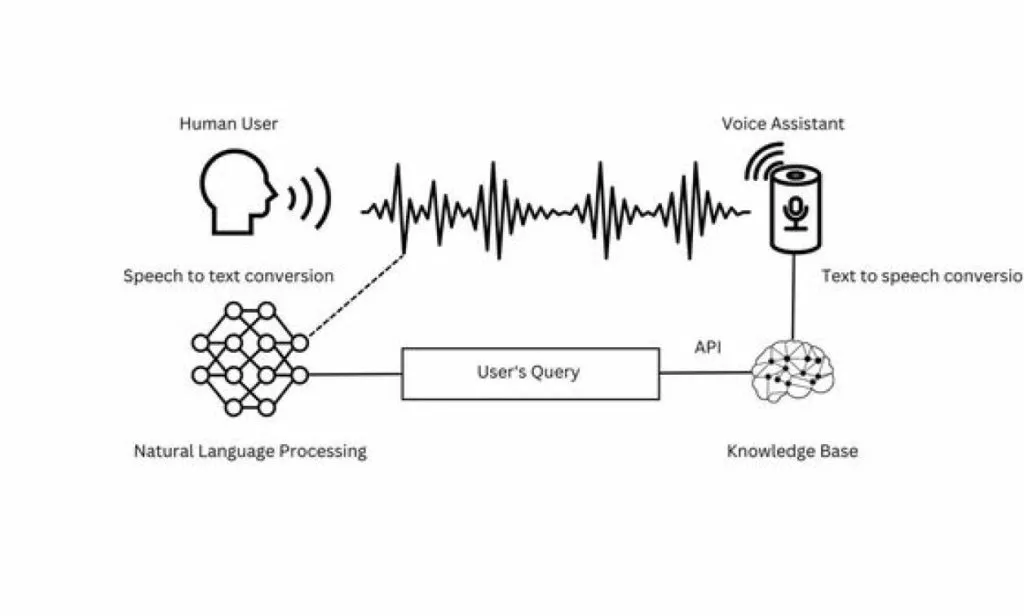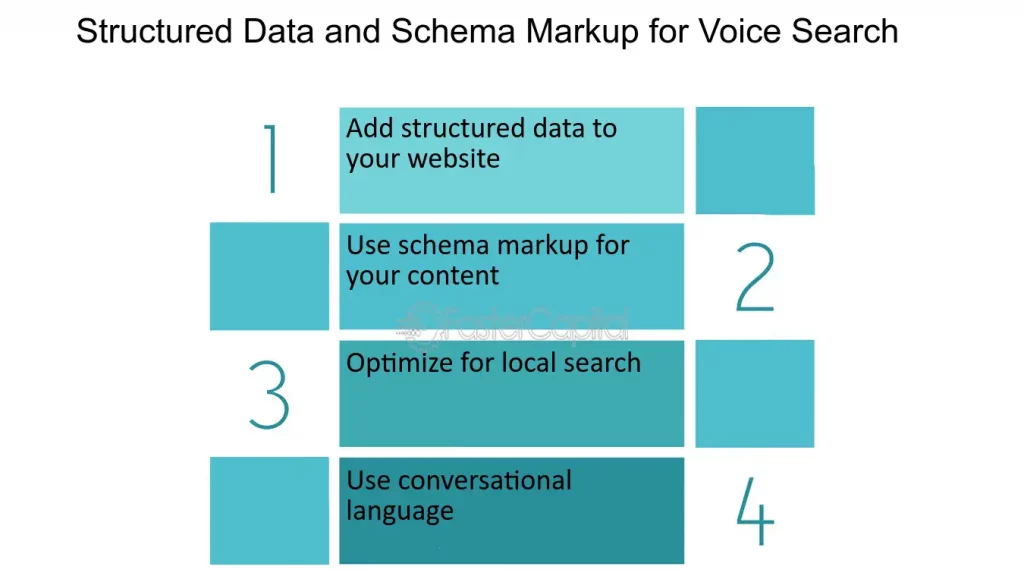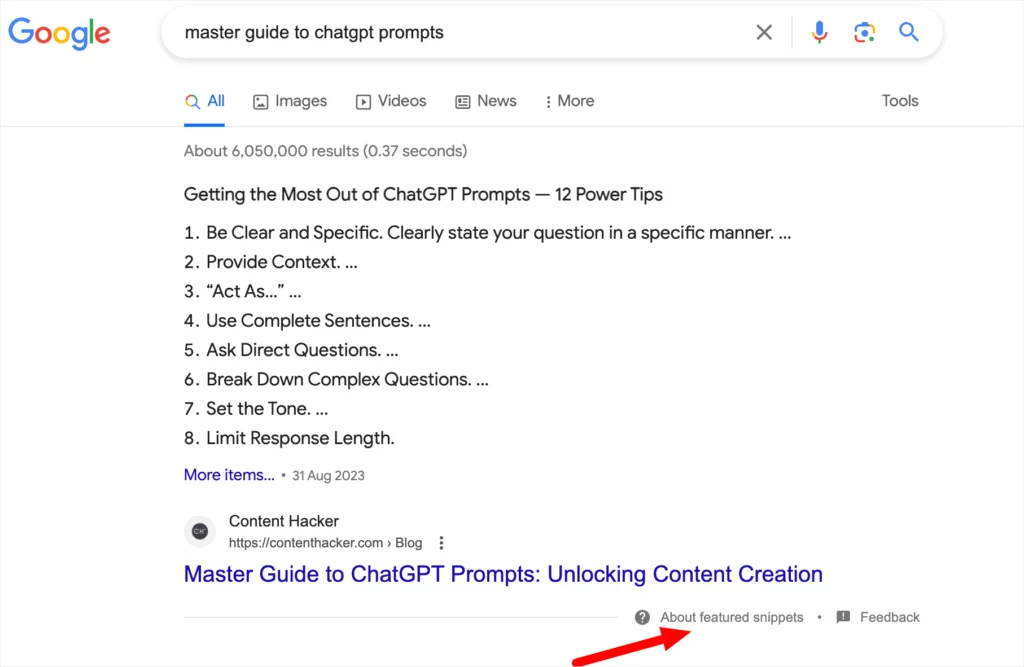The advent of voice search technology has revolutionized the way individuals seek and consume information, reshaping the landscape of digital interaction. As voice-activated devices like smartphones, smart speakers, and virtual assistants become ubiquitous, the need for businesses to adapt their online presence is more pressing than ever. Voice Search Optimization (VSO) emerges as a pivotal strategy in this paradigm shift, requiring a nuanced approach to SEO that aligns with the conversational and context-driven nature of spoken queries. In this era of hands-free exploration, understanding the impact and nuances of voice search optimization is not merely advantageous but imperative for businesses aiming to stay visible and relevant in the ever-evolving digital sphere.
Differentiating Voice Search from Traditional Search:

The crux of voice search optimization lies in recognizing the nuanced differences between voice and traditional searches, particularly in query phrasing. Take, for instance, a user searching for a nearby restaurant:
- Traditional Search: The user might type “restaurants near me” into the search box.
- Voice Search: The user is likelier to articulate, “Hey, Siri! What’s the best restaurant nearby?”
The fundamental distinction surfaces in the conversational and extended nature of voice searches. These subtle variations are significant in SEO, particularly for highly competitive search terms.
Impact of Voice Search Devices on SEO:

- Conversational Queries: Voice searches are typically more conversational and natural than typed queries. Users tend to phrase their questions as if they were talking to someone. This has led to a shift in keyword strategies, emphasizing long-tail and natural language keywords.
- Featured Snippets and Position Zero: Voice search devices often provide a single, concise answer to a user’s query. This has amplified the importance of featured snippets and securing the coveted “Position Zero” on search engine results pages (SERPs). Content optimized for snippets has a higher chance of being read aloud by voice search devices.
- Local SEO Emphasis: A significant portion of voice searches has local intent. Users often inquire about nearby businesses, services, or events. Optimizing for local SEO, including accurate business information, location-based keywords, and positive online reviews, becomes crucial for businesses aiming to capture voice search traffic.
- Structured Data Markup: Voice search devices rely on structured data markup to understand and present information effectively. By implementing schema markup, websites provide search engines with additional context about their content, increasing the chances of being featured in voice search results.
- Mobile Optimization: Voice searches predominantly occur on mobile devices. Therefore, a mobile-first approach is imperative for SEO. Ensuring that websites are responsive, load quickly, and offer a seamless user experience on mobile devices contributes to higher rankings in traditional and voice searches.
- Natural Language Processing (NLP): Voice search relies heavily on Natural Language Processing to comprehend the nuances of spoken language. SEO strategies need to align with this by focusing on user intent. Content should be crafted to address users’ specific questions and needs through voice commands.
- User Experience and Engagement: To secure a prominent place in voice search results, content must be high quality and provide comprehensive and valuable information. Engaging and informative content satisfies user queries and increases the likelihood of users engaging with the website, positively influencing SEO.
- Adaptation to New Technologies: Websites must adapt to and integrate with emerging technologies, such as voice assistants. Optimizing for platforms like Amazon’s Alexa, Google Assistant, or Apple’s Siri can open up new avenues for reaching users through voice-activated devices.
- Long-Term SEO Strategy: The impact of voice search devices on SEO is not transient. Businesses need to incorporate voice search optimization into their long-term SEO strategy, anticipating further advancements in voice technology and evolving user behaviors.
Tips to Optimize Content for Voice Search:
1. Selecting Appropriate Keywords for Voice Search Optimization
The initial phase in executing an effective strategy for voice search optimization involves the meticulous selection of keywords tailored to this specific search mode.
To ensure optimal performance in voice search results, it is crucial to recognize that voice searches tend to be more extensive and conversational than traditional text-based queries. Consequently, the strategic inclusion of long-tail keywords in your content becomes indispensable. This approach significantly enhances the probability of securing high rankings for specific phrases that users might articulate to virtual assistants.
Identifying the perfect long-tail and conversational keywords may seem akin to navigating through a haystack to find a needle. However, optimizing your website’s content for voice search is paramount, and this journey is facilitated by utilizing the right tools.

When users use voice commands to interact with their devices, they employ a more natural language than typing queries into a search bar. This shift in language dynamics involves asking complete questions or using phrases that mirror everyday conversational patterns. Consequently, traditional keyword research tools may need to catch up in capturing these nuances.
Leveraging tools such as Answer The Public and Also Asked becomes essential to address this challenge. These tools offer visualizations of questions linked to your seed keyword, providing valuable insights akin to gaining a glimpse into the thought processes of potential customers.
Additionally, forums and social media platforms serve as valuable arenas for obtaining insights. Actively participating in discussions relevant to your business on these platforms offers a real-time understanding of users’ specific queries.
Google Trends emerges as a dynamic tool, enabling marketers to analyze shifts over time in how certain terms are being searched. This temporal perspective provides invaluable information for businesses aligning with evolving user behaviors.
In essence, the primary objective transcends the mere identification of keywords; it entails the pursuit of “golden nuggets.” These are long-tail keywords characterized by high search volume yet low competition. The discovery of such keywords can make a substantial difference in determining whether your content achieves visibility on page one or gets submerged in content abundance beyond page two.
Learn how AI helps in marketing here.
2. Crafting Compelling and Informative Content—with a Conversational Flair
The crux of effective voice search optimization lies in the creation of high-quality, informative content that adeptly addresses user queries. The production of well-researched content establishes you as an authority in your field and contributes to enhanced search engine rankings.

To position your content favorably for voice search queries, it is essential to delve into conversational inquiries. In voice searches, individuals often initiate their queries with terms like “how,” “what,” and “where,” forming more extended questions that offer context beyond their concise counterparts.
Therefore, your content should revolve around keywords rooted in questions and mirror the language commonly employed in conversational dialogues. Maintaining a conversational tone in your optimization efforts is paramount. This entails employing complete sentences or questions as keywords, steering away from the exclusive focus on single words or phrases.
For instance, rather than concentrating solely on “best pizza,” consider optimizing for the question: “Where can I find the best pizza near me?” This nuanced approach aids search engines in comprehending and aligning your content more accurately with voice queries.
The surge in voice search adoption can be primarily attributed to advancements in natural language processing (NLP). This technological stride empowers machines to recognize spoken words and discern their meanings accurately, particularly in an era marked by the widespread use of artificial intelligence (AI).
This signifies that search engines have transcended mere keyword reliance and can now interpret intricate phrases beyond rudimentary commands while accommodating syntactic nuances and regional dialects. Therefore, for your content to effectively align with the search dynamics, it must exude a conversational essence.
3. Harnessing the Power of Local SEO
A substantial portion of voice-searches revolves around local intent, with users frequently employing voice search to locate nearby businesses or services. Consequently, optimizing for local searches becomes imperative.

Local SEO entails enhancing the visibility of your content in search results for location-specific queries. To achieve this, optimize your website with keywords specific to your location and integrate pertinent contact details such as address, phone number, and operating hours. Other strategies for local SEO encompass:
- Optimizing your Google Business Profile: This free tool from Google enables you to influence how your business appears across Google properties, including Google Shopping, Google Maps, and Google Search.
- Leveraging local business directories: These platforms compile lists of local businesses along with their location and contact information, facilitating your appearance in local search results.
4. Integrating Schema Markup for Enhanced Contextual Understanding
Schema markup, also known as structured data, plays a pivotal role in aiding search engines to comprehend the context of your web pages by furnishing additional details about their contents. Incorporating Schema.org markup facilitates platforms like Google Assistant and other virtual assistants in displaying rich snippets from your site during voice search results.

The FAQ schema is among the crucial schema types conducive to voice-search SEO. By creating FAQ sections within your content and implementing FAQ schema, you signal to search engines that you consistently address questions frequently posed by users. This strategic move enhances the likelihood of your content being selected for the requested information.
5. Navigating the Mobile Landscape for Enhanced Voice Search Optimization
The proliferation of mobile devices has ushered in a surge in voice queries. Tailoring your website for mobile usage can significantly enhance its visibility in voice-search results.
Users increasingly resort to their smartphones while on the move, so the preference for verbal inquiries over typing becomes apparent. Ensuring that your website loads swiftly and exhibits optimal display on smaller screens becomes pivotal for visibility in voice search results.
Several strategies can augment mobile-friendliness:
- Improving Page Speed: Enhance loading times for a seamless user experience.
- Responsive Design: Utilize a design that adapts content according to screen size.
- File Size Reduction: Optimize by reducing file sizes for expedited loading.
- User-Friendly Navigation: Facilitate easy navigation with larger clickable areas, mitigating the hassle of minuscule buttons.
Optimizing for mobile extends beyond technicalities; it involves formatting pages and content to enhance readability on compact screens. This practice inherently aligns your content with the preferences of voice search queries.
6. Striving for Position Zero: Capturing Featured Snippets for Optimal Voice Search Impact
Featured snippets, often called position zero, occupy a prominent position above regular search results on Search Engine Results Pages (SERPs), typically following advertisements. These snippets present concise blurbs or bullet lists that succinctly answer search queries.
Securing the featured snippet is paramount in voice search SEO, as voice assistants derive answers from these snippets in response to voice commands.

Critical tips for attaining the featured snippet include:
- Implementing Schema Markup: Enhance contextual understanding for search engines.
- Table of Contents: Facilitate navigation and organization for users and search engines.
- Question-Based Keywords: Tailor your content with queries likely to match voice searches.
- Creating Comprehensive Content: Develop the most comprehensive content on the subject matter.
- Strategic Use of Headers and Subheadings: Employ proper formatting to enhance content structure.
Beyond its impact on voice search SEO, capturing the featured snippet augments overall search traffic and organic clickthrough rates (CTR). This achievement translates into an elevated return on investment (ROI) for your content marketing endeavors. Remember, the goal isn’t to oversimplify rich content but to offer clear and direct responses satisfying user queries while enticing them to explore further on your website.
Conclusion:
As voice search devices solidify their presence in households, the landscape of SEO undergoes rapid transformation. Interactions with smart speakers influence how brands shape content and devise digital marketing strategies.
Traditional search engine optimization approaches are needed; incorporating voice search queries is imperative when strategizing your content and SEO.
For brands aspiring to stay relevant and align with Google’s algorithms, optimization for voice search is a strategic imperative. The transition towards voice-search-friendly content not only ensures future relevance but also unlocks the potential of long-form content marketing to foster the growth and scalability of your business.
FAQs on Voice Search Optimization:
Why is mobile optimization crucial for voice search?
Mobile optimization is essential for voice search as users often employ smartphones for verbal inquiries. A mobile-friendly website, with swift loading times and optimal display on smaller screens, enhances visibility in voice search results.
How can I secure a featured snippet for voice search SEO?
To secure a featured snippet, implement schema markup, incorporate a table of contents, use question-based keywords, create comprehensive content, and strategically utilize headers and subheadings.
Why is voice search optimization essential for the future of SEO?
With the ubiquity of voice search devices, traditional SEO strategies are evolving. Voice search optimization ensures continued relevance and aligns with Google’s algorithms, which increasingly favor search-friendly content.
Does capturing a featured snippet impact overall search traffic and CTR?
Yes, securing a featured snippet impacts voice search SEO and boosts overall search traffic and organic clickthrough rates (CTR), resulting in an increased return on investment for content marketing efforts.



